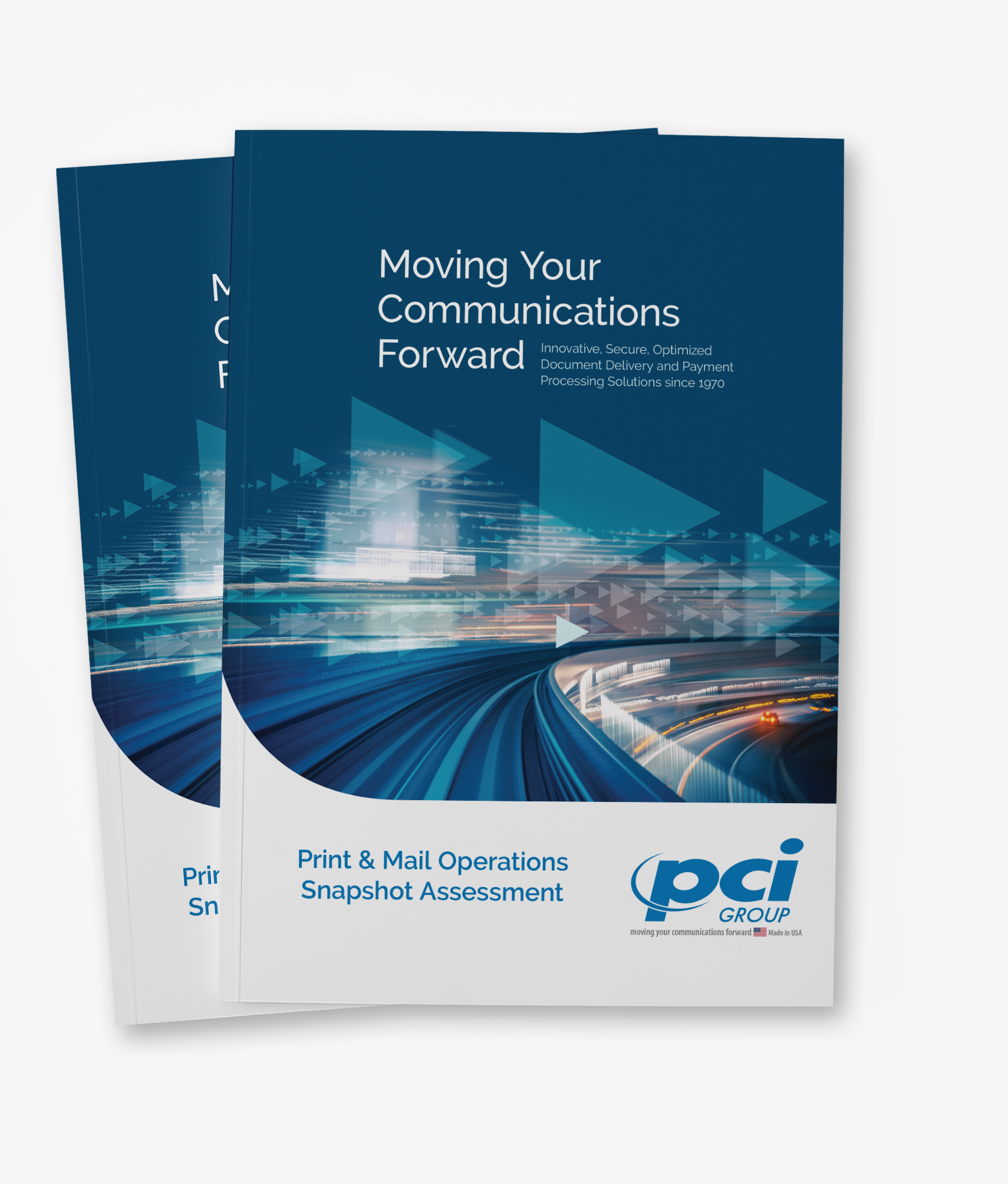
When it comes to the realm of outsourcing print and mail communications, there’s a lot of misinformation and preconceived notions. These myths may be keeping you from making the decision to outsource certain functions like your print and mail customer communications. It’s time to debunk these outsourcing myths, so you can make a well-informed decision.
MYTH ONE:
It’s Too Expensive to Outsource
The reality is that you can actually save with advantages of outsourcing. The reason why this misconception persists is that most companies don’t include all the costs associated with the printing and mailing of customer communications. There are both direct and indirect costs of this practice. In addition to the equipment, materials, and labor, there are many fees that don’t make it on the budget line.
Those indirect costs can include:
- Building repairs
- Environmental costs
- Compliance and security
- Power
- Square footage space
- Trash removal
- Anything that must be paid to keep operations moving
When you are comparing costs be sure you are comparing apples to apples across all applications, including postage. High volume mailers tend to have better postage rates.
Also keep in mind that if your mail volume is not large, the average operational cost per piece is spread out across a smaller volume. With an outsourced provider this cost per piece is typically much less because they will produce in a day what you produce in a month.
Myth Two:
You’ll Lose Control of the Process
Just because you outsource something doesn’t mean it’s no longer within your control. In fact, you may find you have more control. Why? Because the best print and mail companies are completely transparent with their customers. They offer ways to track every letter printed and mailed with barcodes and image captures during print, collation, insertion, and postage. Depending on the sophistication of your technology and equipment, you may not have this kind of visibility in your current operations.
Myth Three:
Your Communications Won’t Meet Compliance
Depending on your industry or the content of your communications, you could be subject to a variety of regulations. Outsourcing doesn’t jeopardize your compliance efforts in anyway. The same tracking system for visibility also helps improve compliance measures.
You very well may find compliance much easier because your provider’s compliance experts are dedicated to compliant communications. Your compliance staff, on the other hand, are probably balancing many different regulations relating to many different processes. So, taking a bit off their plate could help the department focus on core competency compliance.
Myth Four:
All Vendors Are the Same
In this competitive landscape, you’ll find various print and mail customer communication providers, each with varying degrees of functionality. Picking your new vendor by reaching into a hat and pulling a name is not the best idea. When you make the decision to outsource, it’s important to ask some key questions about their assessment capabilities, how they handle transition, accuracy, and compliance efforts. You may find that many vendors will provide accuracy scores over 99 percent. While that is a good a start, 99.9 percent becomes less and less impressive with higher volume. Look for a vendor that has a several more nines added to the number.
Another difference between vendors is how they print. One popular, highly efficient process is the White Paper Factory (WPF) approach. WPF is a turnkey solution for customer communications, with digital files connected to in-line print production and insertion, using 2-D barcodes. It saves costs related to inventory, reduces labor, and delivers an overall lower material cost while increasing overall accuracy. Look into this approach when evaluating prospective vendors.
Myth Five:
Vendors Don’t Understand Your Business
For most print and communication customer correspondence providers, they have expertise in a variety of industries, many of which they’ve partnered with for years. In fact, they should make it
their business to understand your industry and all the requirements of it. This experience and knowledge of your industry ensures that when something changes, they know about it, maybe even before you do.
They also understand the efficiency and haste that must be considered in customer communications, especially invoicing. If your invoices don’t go out on time, return payments are delayed and this domino effect then impacts your cash flow. The right provider understands this and will work to keep communications running.
Myth Six:
Business Continuity Is Always Included in Outsourcing
This is not necessarily true. And what’s more, you may know very little about your outsource partner’s business continuity plan. When talking to prospective vendors ask about how they handle business continuity and what protocols do they follow to reduce or prevent downtime. Having another facility that is redundant, and able to maintain print and mail operations should a disruption occur, is a critical piece that they should have in place.
You can’t just assume that business continuity is part of your contract. Take the time to have a separate conversation about it.
Now that you’ve learned some of the truths about outsourcing customer communications, it may seem much more appealing. If you’re ready to learn more about how outsourcing saves money, improves efficiency, and maintains compliance, then it’s time to chat with the industry leader PCI Group. Get started by taking a Snapshot Assessment to see if outsourcing may make sense for you.


